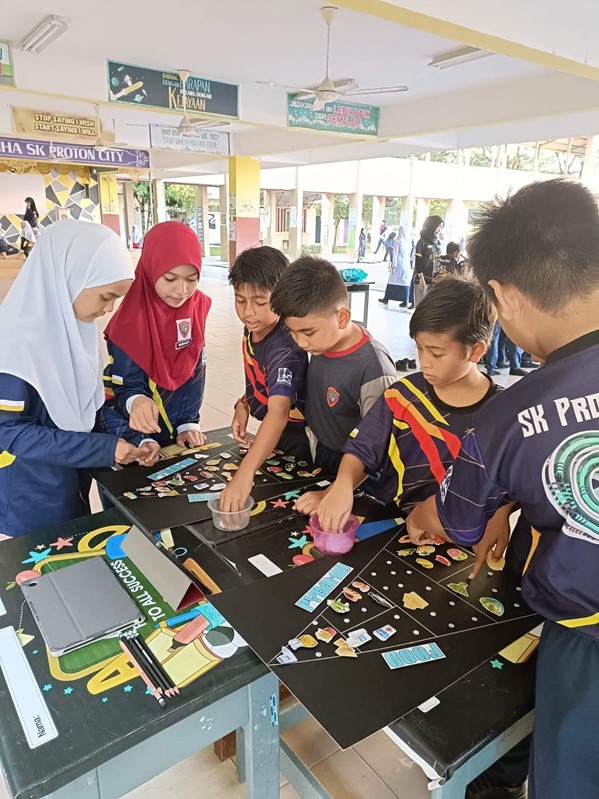In life, a rich blend of science, technology, engineering, and mathematics (STEM) goes beyond labs and classrooms. Our stories are connected to these fields, influencing our experiences and guiding us through life’s incredible journey. Today, let’s take a fascinating trip to discover how STEM was crucial in the amazing adventure of parenthood and welcoming our twin daughters.
The Kickoff: Blending Science and Tech in the Dawn of Parenthood
Our story begins with the joyful revelation of impending parenthood. Using the pregnancy test kit, the appearance of two lines indicated the presence of the pregnancy hormone, human chorionic gonadotropin (hCG). This hormone is released by the cells that form the placenta and can be detected in the urine around six to 14 days after conception. In the early weeks of our journey, I learnt the science behind figuring out how far along our baby was growing.
Our doctor employed the traditional Naegele’s rule, which starts by noting the date of the last menstrual period. This method assumes a standard 28-day menstrual cycle, with ovulation typically occurring around the 14th day. Calculating the menstrual period as seven days adds seven days, considering ovulation usually happens on the 14th day. Another precise approach to determine the gestational age is through ultrasound. However, since our pregnancy was in its fourth week, we were advised to return in the sixth week for the scan, as it can only be performed around that stage.
In today’s tech-savvy era, information about pregnancy is easily accessible through mobile apps. Two weeks later, we met with an obstetrician and gynaecologist (OB/GYN), who recommended a blood test to confirm my wife’s pregnancy. The results showed a higher-than-expected level of the hCG hormone produced by the placenta cells, but we patiently awaited the routine ultrasound scan. This scan, which uses sound waves instead of X-rays, allows doctors to see internal organs without audible sound.
We returned to the OB/GYN clinic when the pregnancy was 10 weeks. Initially, the doctor conducted an abdominal ultrasound scan. However, the doctor informed us of something surprising, which was the presence of two sacs in my wife’s uterus. The doctor then performed a transvaginal ultrasound through the vagina to confirm this. At that moment, we realised why the hCG blood test results conducted a few weeks earlier were higher than expected; we were expecting twins. Generally, twin pregnancies can be confirmed through ultrasound examinations when the pregnancy reaches 10 to 12 weeks of gestation.
The doctor advised my wife to open the “Buku Pink” (Pink Book) at the government clinic because a twin pregnancy is at risk and would require a significant amount of money in case of any unwanted developments. The Pink Book, officially known as the “Rekod Kesihatan Ibu” (Mother’s Health Record), is a health record for the mother and the baby throughout the pregnancy. They require careful and continuous monitoring to ensure that pregnant women are always in optimal health. Hence, the Pink Book is crucial for monitoring their condition during pregnancy.
Navigating The Second Trimester
Pregnancy is usually divided into three trimesters. The first trimester begins at conception and continues until the 12th week. The second trimester starts when the pregnancy reaches the 13th week and continues until the 27th week. Finally, the third trimester spans from the 28th week until the baby’s birth.
Things went well in the first trimester, but challenges arose in the second. One of the twins was smaller, prompting regular visits to a specialist at Sultanah Aminah Hospital (HSA) in Johor Bahru. These fortnightly visits aimed to check for Twin to Twin Transfusion Syndrome (TTTS), a condition occurring in 15% of identical twin pregnancies, a disorder that occurs in identical twin pregnancies due to an imbalance in the blood flow between the foetuses sharing one placenta. I accompanied my wife, often feeling anxious, as we were told that if the weight difference between the two twins exceeded 25%, the specialist would take further action.
Fortunately, the weight difference between our twins stayed within a safe range. Given my wife’s higher risk for Type I Diabetes, she underwent screenings for gestational diabetes mellitus (GDM) in weeks 24 to 28. She had to consume glucose solution twice during two separate appointments. Alongside her regular clinic visits, she also took folic acid supplements, especially in the first trimester, to lower the risk of spinal defects in the baby. Additionally, she needed calcium supplements for the baby’s bone and teeth development, which was crucial in the final trimester. These supplements also helped reduce muscle cramps, which often occur in the last trimester. My wife also required food rich in haemoglobin (Hb), a protein in red blood cells responsible for transporting oxygen throughout the mother’s body and the developing foetuses.
The ideal time for a detailed check-up is between the 18th and 24th weeks of pregnancy. At this stage, the foetus is large enough to thoroughly examine its head, body, structure, limbs, organs, umbilical cord position, amniotic fluid amount, and even determine gender. This examination, the foetal anomaly scan, is crucial and usually happens in the second trimester. After learning the gender of our twins, my wife and I started gradually buying baby clothes. I also got my wife an Ergonomic Maternity Support Belt to reduce pressure and discomfort when moving around as her belly grew. Considering the likelihood of an early delivery, the doctor gave corticosteroid injections (dexamethasone) to help mature the lungs of our twin babies in the womb.
By Associate Professor Dr Abdul Halim Abdullah,
School of Education, Universiti Teknologi Malaysia
Continue reading part 2 here.





